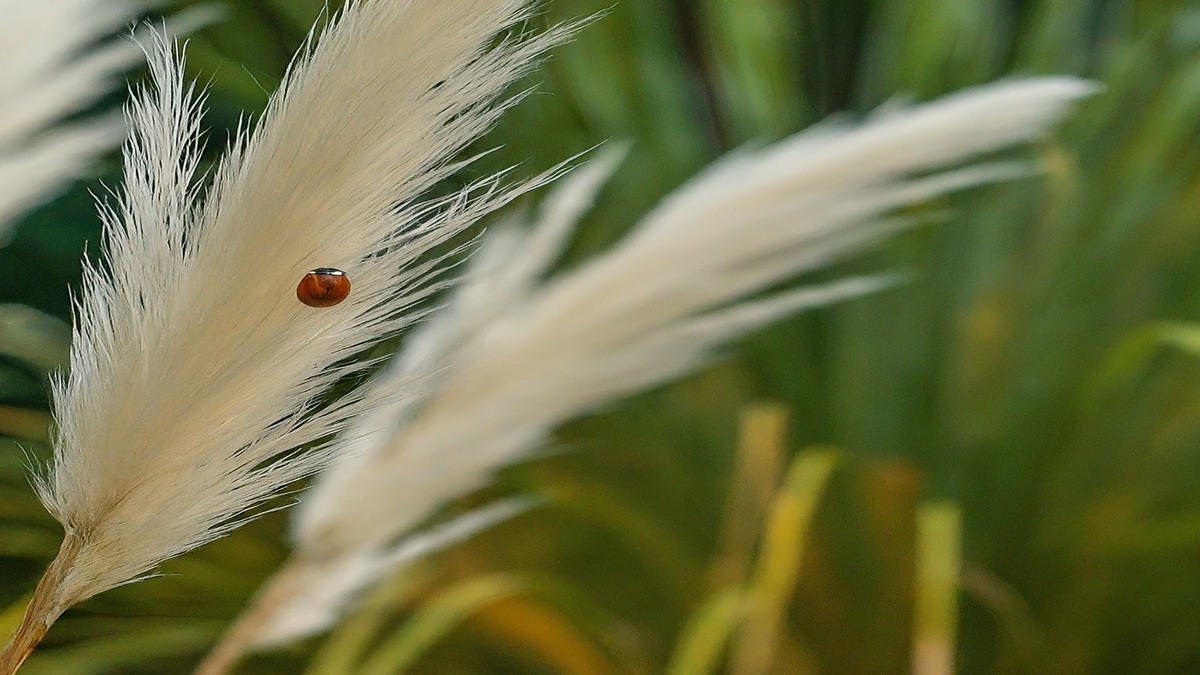Does Pampas Grass Attract Bugs?Yes, pampas grass does attract bugs. Many species of insects and spiders are drawn to the tall, feathery grass due to its airy structure, which provides a comfortable place to hide and lay eggs. Additionally, pampas grass is often used as a food source for many common garden pests. This includes a variety of bugs, including moths, aphids, Japanese beetles, and grasshoppers. Therefore, if you’re considering planting pampas grass, it’s important to be prepared for the potential increase in bugs in your garden area.
Understanding Pampas Grass
Pampas grass, or Cortaderia selloana, is a tall, perennial grass native to South America, particularly Argentina, Brazil, and Chile. It’s characterized by its long, slender leaves that can reach up to 10 feet in length, and its distinctive, feathery white or pink plumes that tower above the foliage. These plumes, which are actually the plant’s flowers, appear in late summer and persist through the winter, providing year-round visual interest.
Pampas grass is a hardy plant that can thrive in a wide range of conditions, but it prefers full sun and well-draining soil. It’s drought-tolerant, making it a good choice for xeriscaping or areas with low rainfall. However, it’s also known to be invasive in certain areas due to its fast growth and prolific seed production.
Popularity in Landscaping
The striking appearance of pampas grass has made it a popular choice in landscaping. Its tall, arching leaves provide texture and movement in the garden, while its large, feathery plumes add a unique architectural element. The plumes also make excellent cut flowers, adding a touch of elegance to floral arrangements.
Pampas grass is often used as a focal point in the garden, but it can also be planted in groups to create a privacy screen or windbreak. Its tolerance for a variety of conditions and its minimal maintenance requirements have contributed to its popularity. However, due to its invasive nature, it’s important to consider local regulations and potential impacts on native ecosystems before planting pampas grass.
Insects Attracted to Pampas Grass
Pampas grass, with its tall, feathery structure, is known to attract a variety of insects. This includes a range of bugs such as butterflies and bees. Other common garden pests that are drawn to pampas grass include moths, aphids, Japanese beetles, and grasshoppers.
Why Bugs Are Drawn to Pampas Grass
There are several reasons why bugs are attracted to pampas grass:
- Shelter: The tall, feathery structure of pampas grass provides an ideal hiding place for many insects and spiders. Its dense clumps and high plumes offer a comfortable place for these creatures to hide and lay eggs.
- Food Source: Pampas grass can serve as a food source for many insects. Its abundant nectar is particularly attractive to insects like butterflies and bees.
- Biodiversity: The presence of pampas grass can contribute to the overall biodiversity of an area by attracting a variety of insects.
It’s important to note that while the presence of these insects can contribute to the overall biodiversity of your garden, it can also lead to an increase in pests. Therefore, if you’re considering planting pampas grass, it’s important to be prepared for the potential increase in bugs in your garden area.
Preventing Insect Infestations on Pampas Grass
Preventing insect infestations on pampas grass involves a combination of good gardening practices and proactive measures:
- Regular Monitoring: Keep a close eye on your pampas grass. Regularly inspect the plant for signs of insect activity such as chewed leaves, discolored foliage, or the presence of bugs themselves.
- Proper Watering and Fertilization: Overwatering or over-fertilizing can make plants more susceptible to pests. Ensure your pampas grass is getting the right amount of water and nutrients.
- Pruning: Regularly prune your pampas grass to remove dead or diseased parts of the plant. This can help prevent the spread of pests.
Is Pampas Grass toxic to dogs?
Natural Methods for Controlling Bugs
If you notice bugs on your pampas grass, there are several natural methods you can use to control them without harming the plant:
- Introduce Natural Predators: Lady beetles, wasps, and other beneficial insects are natural predators of many pests. Introducing these into your garden can help control the bug population.
- Use a Strong Water Spray: A strong spray of water can dislodge bugs like aphids from your pampas grass.
- Insecticidal Soaps or Neem Oil: These are gentler alternatives to harsher pesticides and can be effective in controlling bugs. They work by smothering the pests but are safe for the plant.
- Prune and Dispose of Infested Growth: If a part of the plant is heavily infested, prune it off and dispose of it properly to prevent the spread of the pests.
Remember, the key to managing pests is early detection and intervention. Regular monitoring and maintenance of your pampas grass can go a long way in keeping it healthy and bug-free.
Companion Plants for Pampas Grass
Companion planting is a natural way to enhance your garden, deter pests, and promote a healthy ecosystem. Here are some plants that can be grown with pampas grass to deter insects:
- Salvia: Salvia plants thrive in full sun and attract hummingbirds. They are low-maintenance and grow well with many other flowers.
- California Poppies: These flowers are drought-tolerant and thrive in full sun. They are known for their vibrant colors and can be a great companion for pampas grass.
- Lavender: Lavender thrives in similar conditions as pampas grass and is a lovely fragrant herb to feature in the garden.
- Ornamental Grasses: Low maintenance and thriving in full sun, ornamental grass is a good choice to grow next to pampas grass.
- Marigolds and Mint: Known for their ability to repel pests, these plants can be grown as borders around pampas grass.
- Zinnias: These flowers are known to repel garden bugs and other harmful insects.
Organic Pest Control Methods for Pampas Grass
Organic pest control methods are safe for the environment and can effectively manage pests. Here are some methods suitable for pampas grass:
- Neem Oil: Derived from the neem tree, neem oil acts as a natural insecticide. Its effectiveness against a variety of pests makes it a valuable addition to your pest control arsenal.
- Soap and Water Solution: A mild soap and water solution can be sprayed on pampas grass to deter aphids and other pests.
- Introducing Beneficial Insects: Certain insects, like ladybugs and lacewings, are natural predators of many pests. Introducing these into your garden can help control the bug population.
- Mulching: This process involves covering the area around pampas grass with organic materials such as wood chips, leaves, or straw. The goal is to prevent sunlight from reaching its roots, which hinders photosynthesis, leading to the grass’s death over time.
- Physical Removal: This involves manually removing the bugs from the plant. Be sure to wear gloves and protective clothing to avoid irritation.
Remember, the key to managing pests is early detection and intervention. Regular monitoring and maintenance of your pampas grass can go a long way in keeping it healthy and bug-free.
Does pampas grass smell?
CONCLUSION
In conclusion, while pampas grass does attract bugs, with proper care and management, it’s possible to control the insect population and maintain the health and beauty of your pampas grass.
FAQs
Here are some FAQs:
- What Types of Bugs Are Attracted to Pampas Grass? A variety of insects and spiders are attracted to pampas grass. This includes small rodents, flea beetles, and spider mites. The grass’s tall and feathery structure provides a comfortable place for these creatures to hide and lay eggs.
- Does Pampas Grass Attract Mosquitoes? While it’s not specifically mentioned that mosquitoes are attracted to pampas grass, the plant does attract a variety of bugs and small mammals. Therefore, it’s possible that mosquitoes could be among the insects drawn to this plant.
- How Can I Prevent Bugs in My Pampas Grass? Regular maintenance and care of your pampas grass can help prevent an infestation of bugs. This includes proper watering, ensuring plenty of sunlight, and trimming the grass twice a year—once in late spring and once in early fall. This helps keep the plumes looking lush and full, and prevents any unwanted growth or spread of the plant into other areas of your yard or garden beds.



Pingback: Is Pampas Grass toxic to dogs? – graasy.com
Pingback: Thinking of Planting Pampas? Read This First